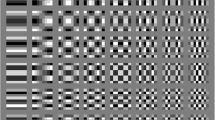Abstract
Trusted forensics is one of the most important problems in VANET, and it often needs continuous video monitoring, once break out emergent vehicle accidents, then specific staff members take steps for forensics to obtain facts and define responsibility. Traditional forensics exists problems of inaccurate information, unfair responsibility definition and risk of leakage of user’s privacy. To solve the above problem, in this paper, we proposed a trusted forensics scheme based on digital image watermark in intelligent VANET, in which we proposed technical and fair algorithms for trusted forensics, and the trusted forensics scheme includes basic forensics parameter data obtaining critical forensics data automatic generation and forensics data extraction. Once there vehicle accident occurred, the forensics system first obtains the location, timestamp, forensics device data as basic forensics parameter data, and then, it embeds the forensics parameter as watermark into the real-time vehicle accident photograph by the proposed digital watermark algorithm, and thus, the real-time and undeniable forensics data are automatic generated as evidence; when necessary, the forensics system can extract the evidence data and watermark data from the critical forensics data. The proposed scheme can detect the content integrity of image data and even find out tampering mark when the image data are tampered. Additionally, we used neural network algorithm for vehicle license plate recognition and rapid vehicle information gathering. Finally, experiments evaluations manifest the proposed is forensics scheme is secure, robust, and efficient in vehicle forensics.















Similar content being viewed by others
References
Hartenstein H, Labertaux K (2009) VANET: vehicular applications and inter-networking technologies, vol 1. Wiley, Hoboken
Hartenstein H, Laberteaux KP (2008) A tutorial survey on vehicular ad hoc networks. IEEE Commun Mag 46(6):164–171
Qiu T, Liu J, Si W, Han M, Ning H, Atiquzzaman M (2017) A data-driven robustness algorithm for the internet of things in smart cities. IEEE Commun Mag 55(12):18–23
Contreras J, Zeadally S, Guerrero-Ibanez JA (2017) Internet of vehicles: architecture, protocols, and security. IEEE Int Things J. https://doi.org/10.1109/JIOT.2017.2690902
Cheng N, Zhang N, Lu N, Shen X, Mark JW, Liu F (2014) Opportunistic spectrum access for CR-VANETs: a game-theoretic approach. IEEE Trans Veh Technol 63(1):237–251
Chaqfeh M, Lakas A, Jawhar I (2014) A survey on data dissemination in vehicular ad hoc networks. Veh Commun 1(4):214–225
Panichpapiboon S, Pattara-Atikom W (2012) A review of information dissemination protocols for vehicular ad hoc networks. IEEE Commun Surv Tutor 14(3):784–798
Hussain SA, Khan NA, Sadiq A, Ahmad F (2018) Simulation, modeling and analysis of master node election algorithm based on signal strength for VANETs through Colored Petri nets. Neural Comput Appl 29(11):1243–1259
Ruj S, Cavenaghi MA, Huang Z, Nayak A, Stojmenovic I (2011) On data-centric misbehavior detection in VANETs. In: Vehicular technology conference, VTC Fall 2011, IEEE, pp 1–5
Petit J, Schaub F, Feiri M (2015) Pseudonym schemes in vehicular networks: a survey. IEEE Commun Surv Tutor 17(1):228–255
Wu Q, Domingo-Ferrer J, González-Nicolás U (2010) Balanced trustworthiness, safety, and privacy in vehicle-to-vehicle communications. IEEE Trans Veh Technol 59(2):559–573
Wei Y, Chen Y, Shan H (2011) Beacon-based trust management for location privacy enhancement VANETs. In: 13th Asia–Pacific IEEE network operations and management symposium, APNOMS 2011, pp 1–8
Harit SK, Singh G, Tyagi N (2012) Fox-hole model for data-centric misbehaviour detection in VANETs. In: 2012 third international conference on computer and communication technology (ICCCT), pp 271–277
Huang Z, Ruj S, Cavenaghi MA, Stojmenovic M, Nayak A (2014) A social network approach to trust management in VANETs. Peer-to-Peer Netw Appl 7(3):229–242
Bißmeyer N, Stresing C, Bayarou KM (2010) Intrusion detection in vanets through verification of vehicle movement data. In: Vehicular networking conference, VNC 2010, IEEE, pp 166–173
Minhas UF, Zhang J, Tran T, Cohen R (2010) Towards expanded trust management for agents in vehicular ad-hoc networks. Int J Comput Intell Theory Pract 5:3–15
Bouslimi D, Coatrieux G, Cozic M, Roux C (2012) A joint encryption/watermarking system for verifying the reliability of medical images’. IEEE Trans Inf Technol Biomed 16(5):891–899
Bravo-Solorio S, Nandi AK (2011) Secure fragile watermarking method for image authentication with improved tampering localisation and selfrecovery capabilities. Signal Process 91(4):728–739
Zeng Y-J, Xu X, Shen S-Y et al (2017) Traffic sign recognition using kernel extreme learning machine with deep perceptual features. IEEE Trans Intell Transp Syst 18(6):1647–1653
Huang G-B, Zhu Q-Y, Siew C-K (2004) Extreme learning machine: a new learning scheme of feedforward neural networks. In: Proceedings of the international joint conference neural networks, Budapest, pp 985–990
Author information
Authors and Affiliations
Corresponding author
Ethics declarations
Conflict of interest
The authors declare that they have no conflict of interest.
Additional information
Publisher's Note
Springer Nature remains neutral with regard to jurisdictional claims in published maps and institutional affiliations.
Rights and permissions
About this article
Cite this article
Ma, Z., Jiang, M. & Huang, W. Trusted forensics scheme based on digital watermark algorithm in intelligent VANET. Neural Comput & Applic 32, 1665–1678 (2020). https://doi.org/10.1007/s00521-019-04246-1
Received:
Accepted:
Published:
Issue Date:
DOI: https://doi.org/10.1007/s00521-019-04246-1




